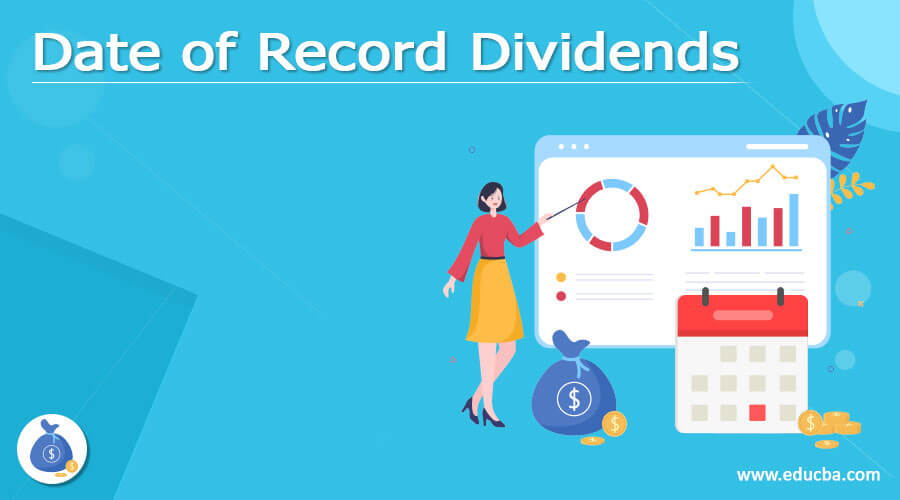Updated July 18, 2023

Definition of Date of Record Dividends
The date of record dividends, also known as the “record date,” is the cut-off date decided by the company, establishing the list of eligible stockholders for distribution dividends.
The record date determines the list of stockholders on a particular date, and only those whose names appear on the list become eligible for receiving dividends on their stocks.
Explanation
The stocks of public companies are available on stock exchanges for regular trading; thus, the stocks keep getting transferred from one person to another. Moreover, due to the high volume of transactions, the stockholders keep changing now and then. Thus, a company needs to decide on a cut-off date to determine which date will be considered for distributing dividends. This date which acts as a cut-off date for the distribution of dividends is known as the date of record dividends.
In addition to the record date, the ex-dividend date is important for deciding the stockholders eligible for dividend receipts. Once the record date is finalized, the determination of the ex-dividend date is also finalized, typically setting it up to two business days before the record date. An investor must buy or own the stocks one day before the ex-dividend date to be eligible for dividends. Anyone who purchases shares on or after the ex-dividend date doesn’t appear in the list of eligible shareholders for dividends as of the record date.
How Does It Work?
The company establishes the record date, checking the stockholder records to determine dividend eligibility. Conversely, the stock exchange rules determine the fixed ex-dividend date, often setting it up to two days before the record date. If a seller transfers the stocks on or after the record date, the seller remains eligible for dividends, not the buyer. This is because the list of stockholders one day before the ex-dividend date is considered for dividend distribution.
Ex-dividend dates and record dates differ because the settlement of stocks and updating the records in the companies’ books take some time. Thus, on the record date, a company checks the list of shareholders eligible for dividends based on the ex-dividend date.
Examples of Date of Record Dividends
Let us understand the concept of the record date with the help of an example.
Suppose the company has decided that the stockholders appearing in company records on 30th June shall be considered for the payment of dividends on 20th July. In this case, 30th June is the record date. Now consider that per the stock exchange rules, the ex-dividend date is 28th June. Mr. Jackson sells his stocks on 29th June. Will he be eligible for dividends?
As we have discussed, a person must hold stocks before the ex-dividend date to be eligible for dividends. Since Mr. Jackson sold on 29th June i.e., after the ex-dividend date, he remains eligible for dividends. Therefore, he will be an eligible stockholder in the company’s records on the record date.
Importance of Date of Record Dividends
The date of record of dividends is very important for companies to determine the stockholders to whom the dividends shall be paid. This is because only those stockholders who paid dividends appear on the record date in the company’s records. The list records the names of stockholders who held stocks one day before the ex-dividend day. The list ignores any stock transfers occurring on or after the ex-dividend date for record keeping. Upon finalizing the dividend list based on records on the record date, payments are made on the predetermined future date. The dividend payment advice is based on the finalized list as of the record date.
Conclusion
One must not confuse the date of records dividends with ex-dividend dates. The ex-dividend date falls before the record date and helps to decide which all names appear in the company’s record as on the record date for dividend payments. Further, both these dates are very important for deciding dividend distributions.
Recommended Articles
This is a guide to the article. Here we also discuss the definition and how does it work? Along with examples and importance. You may also have a look at the following articles to learn more –

